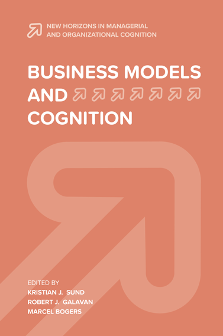
Index
ISBN: 978-1-83982-063-2, eISBN: 978-1-83982-062-5
ISSN: 2397-5210
Publication date: 30 November 2020
Citation
(2020), "Index", Sund, K.J., Galavan, R.J. and Bogers, M. (Ed.) Business Models and Cognition (New Horizons in Managerial and Organizational Cognition, Vol. 4), Emerald Publishing Limited, Leeds, pp. 253-255. https://doi.org/10.1108/S2397-521020200000004012
Publisher
:Emerald Publishing Limited
Copyright © 2021 Emerald Publishing Limited
INDEX
- Prelims
- Exploring the Connections Between Business Models and Cognition: A Commentary
- Examining Ceos’ Business Model Schemas: A Cognitive Mapping of Differences Between Industry Insiders and Outsiders
- Unveiling the Dark Side of Business Models: A Novel Framework for Managerial Cognition and Decision-Making
- Escaping the Founder Identity Trap: A Process View on Business Model Design During New Venture Creation
- What Bounds Entrepreneurial Business Modelling? The Impacts of Visual Framing Effects and Cognitive Dispositions
- Creating Meta-Narratives: How Analogies and Metaphors Support Business Model Innovation
- The Metacognition Underlying Radical Business Model Innovation: Four Case Studies of Individual Criticism
- Barriers in Searching for Alternative Business Models: An Essay on the Fear of Looking Foolish
- Business Model Innovation in Incumbent Firms: Cognition and Visual Representation
- Science and Swagger for Success: The Interactions of Hypothesis Testing and Self-Efficacy to Influence Business Model Performance
- Index